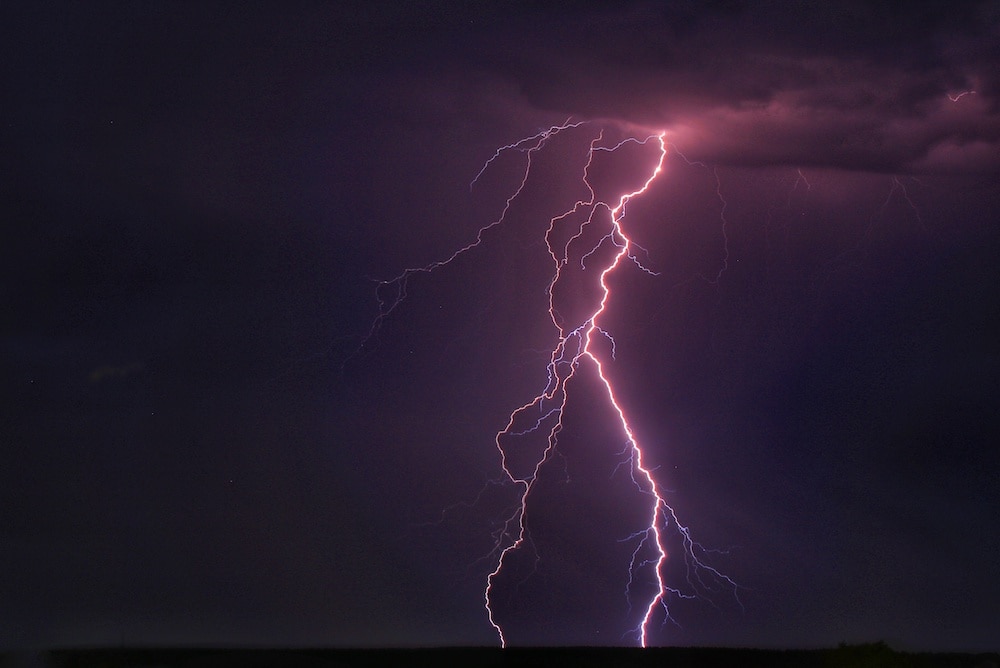Create a free profile to get unlimited access to exclusive videos, sweepstakes, and more!
When Thor’s hammer hits you, it leaves a mark on your bones
What happens if a lightning victim has been reduced to a skeleton by the time their remains are found?

“You have a better chance of being struck by lightning” might not be the most reassuring adage, and monster flashes of electricity can be more than special effects in a Marvel movie, depending on where you are.
The hammer of the Thunder God can strike a lethal blow. In South Africa, the threat of lightning storms is real, with 250 people (compared to 24,000 across the planet) perishing from lightning each year. Deadlier fingers of lightning have been reaching down from the fiercer thunderstorms brought on by climate change. But what happens if a victim has been reduced to a skeleton by the time their remains are found?
While signs of lightning trauma can be identified in the soft tissues of bodies that have not yet decomposed, what happens if investigators are too late, and how can you tell death by lightning apart from murder or another cause if only bones are left? Researchers Tanya Augustine, of Wits University in South Africa, and Patrick Randolph-Quinney of Wits University and Northumbria University, have found out. They co-authored a study on their findings that was recently published in Forensic Science International: Synergy.
New research has found a way to determine whether people or animals were victims of fatal lightning strikes just by studying their skeletons. This was really difficult to prove before, unless the body was not fully decomposed and marks were identified on the skin or internal organs.
“We suspect that high intensity current like lightning causes microfracturing due to a pressure wave, or barotrauma, that follows a path through the bone that offers the least resistance — the easiest route,” Augustine told SYFY WIRE.
Randolph-Quinney thinks two processes create a telltale pattern of microfracturing in bone — barotrauma, an injury that occurs because of changes in air or water pressure, and a piezoelectric effect. This is the effect that causes some materials to generate an electric charge when experiencing mechanical stress. Bone realigns its collagen fibers when exposed to an electrical field. This triggers the piezoelectric effect, which stresses and cracks brittle crystals of bioapatite in the bone. Resulting fractures that radiate outward can give away a lightning death.
So how can you tell this apart from homicide? Sorry to steal your thunder, Thor, but the researchers created lightning in a lab themselves and targeted pieces of human bone to see the effects. Lightning may be extremely hot, but not hot enough to actually burn bone. Distinguishing death by lightning from arson is a matter of whether bone has had all its organic material (such as collagen) burned off. Zapping the bone with high-impulse currents in short bursts showed that microfractures and other changes ended up being completely different.
“Bone has to be at over 572 degrees Fahrenheit for a considerable period of time for it to burn, and between about 1,110 and 1,832 C for an extended time for all the organics to burn, or pyrolyze, just leaving brittle, mineralized bone behind,” Randolph-Quinney said.
Lightning-struck bone also does not change color and leaves no soot. The microfracture patterns from lightning are so unique that they appear the same in human and animal bone. Even though there are obvious differences in these bone structures, such as certain arrangements of cells, there are similarities that allow for this. Because an electrical current will flow right through the path of least resistance, and because human and animal bones are both made of collagen and bioapatite, signs of lightning trauma are just about identical in both.
Unfortunately, African countries have some of the highest lightning death rates. Randolph-Quinney and Augustine are working to change that.
“We hope to help with identification of human remains and shed light on the circumstances surrounding death,” Augustine said. “Given the high incidence of lightning-related fatalities, some of our colleagues are also moving forward in improving lightning safety in rural and urban areas.”


























